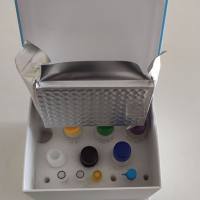Microprotoplast-Mediated Chromosome Transfer (MMCT) for the Direct Production of Monosomic Addition Lines
互联网
621
The transfer of single chromosomes carrying important genes between related, but sexually incongruent species, and the production of monosomic addition plants, can speed up gene introgression through homoelogous recombination or other mechanisms of gene transfer (1 ,2 ). Monosomic addition lines form the most important material for the transfer of desirable alien genes from a wild donor species to a cultivated species. Because of sexual incongruity between the wild species and the cultivated species, the demands of breeders for the transfer of desirable traits, such as disease or stress resistance and apomixis, are insufficiently met by conventional breeding methods. DNA transformation using the isolated, cloned genes makes it feasible to transfer genes across sexual barriers or taxonomic boundaries. However, several of the agro-nomically important traits are encoded by polygenes, which are clustered within blocks on specific chromosomes or scattered throughout the genome, and therefore they are not yet amenable to this technique. In addition to sexual incongruity, and the possible gene clustering for a locus (e.g., controlling apomictic reproduction in maizQ-Tripsacum backcross progeny), the occurrence of male sterility, poor seed set, and the low frequency of desired traits hinder the transfer of economically important genes. Also, by backcrossing, it is often difficult to eliminate the recombined undesirable donor genes and prevent linkage drag “hitchhiking” genes (1 ).









